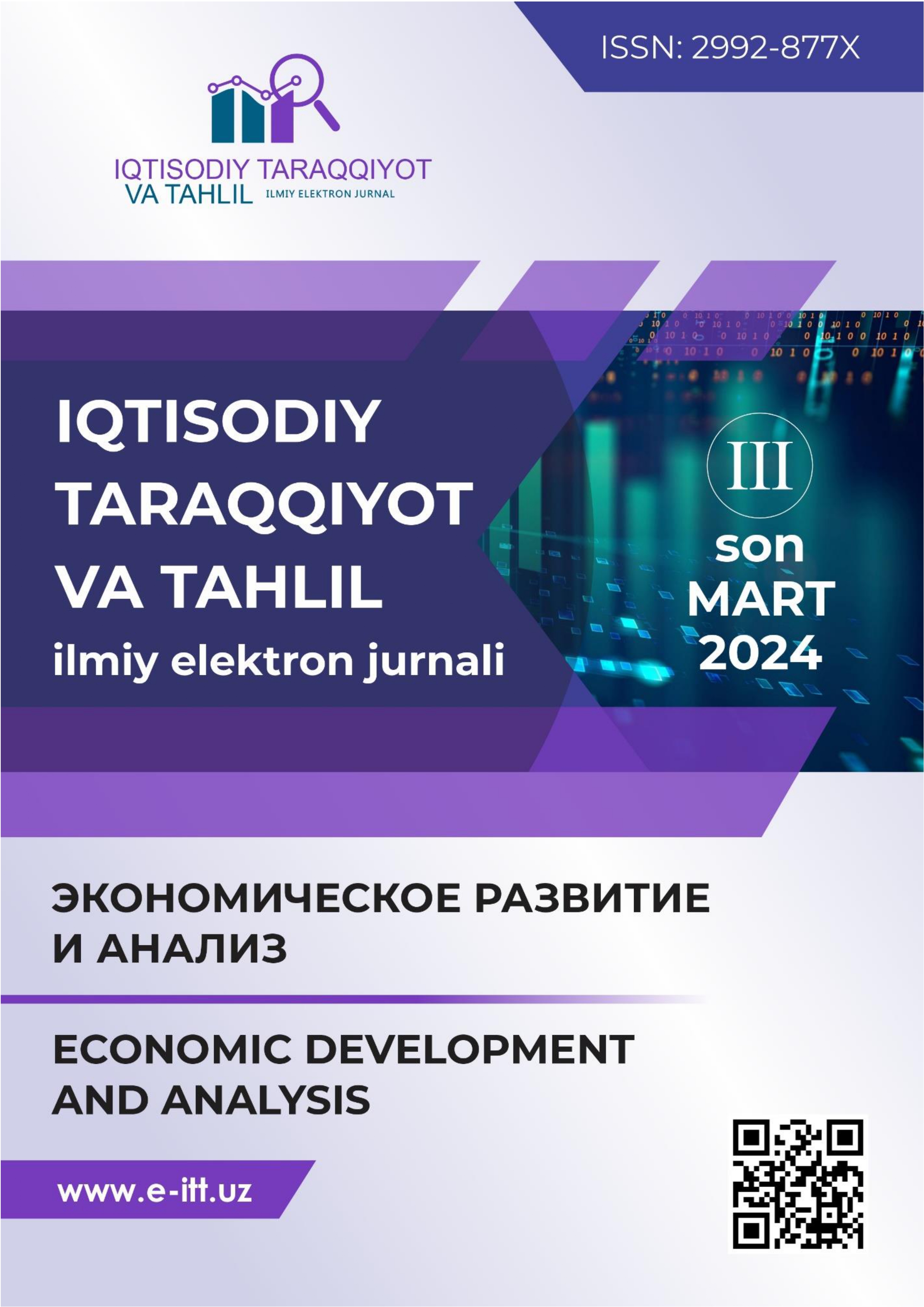XALQARO MEHNAT MIGRATSIYASIDA YUQORI MALAKALI MUTAXASSISLARNI TASNIFLASH TENDENSIYALARI
DOI:
https://doi.org/10.60078/2992-877X-2024-vol2-iss3-pp18-23Annotasiya
Ushbu maqolada olimlarning ilmiy tadqiqotlari va tahlillari natijasida yuqori malakali migrantlarga berilgan ta’riflari muhokama qilingan. Nazariy va iqtisodiy-siyosiy amaliyotda yuqori malaka va mahoratni aniqlash muammolariga ahamiyat qaratildi.
Kalit so‘zlar:
yuqori malakali migrantlar mehnat muhojirlari iste’dodlar mahoratBibliografik manbalar
Adams Jr, R.H. (2003) ‘International migration, remittances, and the brain drain: A study of 24 labor-exporting countries’, Remittances, and the Brain Drain: A Study of, 24.
Beach, C.M., Green, A.G. and Worswick, C. (2007) ‘Impacts of the point system and immigration policy levers on skill characteristics of Canadian immigrants’, in Immigration. Emerald Group Publishing Limited, pp. 349–401.
Beaverstock, J. V (2005) ‘Transnational elites in the city: British highly-skilled inter-company transferees in New York city’s financial district’, Journal of ethnic and migration studies, 31(2), pp. 245–268.
Bielewska, A. (2021) ‘Game of labels: Identification of highly skilled migrants’, Identities, 28(5), pp. 615–633.
Borjas, G.J. (1987) ‘Immigrants, minorities, and labor market competition’, ILR Review, 40(3), pp. 382–392.
Borjas, G.J. (2005a) ‘The labor-market impact of high-skill immigration’, American Economic Review, 95(2), pp. 56–60.
Bouvier, L.F. and Simcox, D. (1995) ‘Foreign-born professionals in the United States’, Population and Environment, pp. 429–444.
Cairns, D. (2017) ‘Exploring student mobility and graduate migration: undergraduate mobility propensities in two economic crisis contexts’, Social & Cultural Geography, 18(3), pp. 336–353.
Callister, P. et al. (2006) Globalisation, gendered migration and labour markets. Department of Labour.
Carrington, W.J. and Detragiache, E. (1998) ‘How big is the brain drain?’
Docquier, F. and Marfouk, A. (2006) ‘International migration by education attainment, 1990–2000’, International migration, remittances and the brain drain, pp. 151–199.
Dzvimbo, K.P. (2003) ‘The international migration of skilled human capital from developing countries’, in A case study prepared for a Regional Training Conference on Improving Tertiary Education in Sub-Saharan Africa: Things That Work, pp. 23–25.
Favell, A. (2009) ‘Immigration, migration, and free movement in the making of Europe’, European identity, pp. 167–189.
Geddes, A. (2016) ‘The politics of migration and immigration in Europe’.
Green, A.G. and Green, D.A. (1995) ‘Canadian immigration policy: The effectiveness of the point system and other instruments’, Canadian Journal of Economics, pp. 1006–1041.
Gribble, C. (2008) ‘Policy options for managing international student migration: the sending country’s perspective’, Journal of Higher Education Policy and Management, 30(1), pp. 25–39.
Kerr, S.P. et al. (2016) ‘Global talent flows’, Journal of Economic Perspectives, 30(4), pp. 83–106.
Kerr, W.R. (2013) US high-skilled immigration, innovation, and entrepreneurship: Empirical approaches and evidence. National Bureau of Economic Research.
Khadria, B. (2001) ‘Shifting paradigms of globalization: the twenty‐first century transition towards generics in skilled migration from India’, International migration, 39(5), pp. 45–71.
Koser, K. and Salt, J. (1997) ‘The geography of highly skilled international migration’, International Journal of Population Geography, 3(4), pp. 285–303.
Kuptsch, C. (2006) ‘Students and talent flow–the case of Europe: From castle to harbour’, Competing for global talent, pp. 33–61.
Lowell, B.L. (2005) ‘Policies and regulations for managing skilled international migration for work’, United Nations, Mortality and Migration Section of the Population Division/DESA, pp. 1–21.
Mahroum, S. (1999) ‘Highly skilled globetrotters: the international migration of human capital’, in Proceedings of the OECD workshop on science and technology labour markets, DSTI/STP/TIP (99). Citeseer, pp. 168–185.
Parsons, C.R. et al. (2020) ‘High skilled migration through the lens of policy’, Migration Studies, 8(3), pp. 279–306.
Peri, G. and Sparber, C. (2011) ‘Highly educated immigrants and native occupational choice’, Industrial Relations: a journal of economy and society, 50(3), pp. 385–411.
Salt, J. (1997) ‘International movements of the highly skilled’.
Solimano, A. (2008) The international mobility of talent: Types, causes, and development impact. Oxford University Press, USA.
Tremblay, K. (2002) ‘Student mobility between and towards OECD countries: a comparative analysis’, International mobility of the highly skilled, pp. 39–67.
Walsh, J. (2008) ‘Navigating globalization: Immigration policy in Canada and Australia, 1945–2007 1’, in Sociological Forum. Wiley Online Library, pp. 786–813.
Weinar, A., Klekowski von Koppenfels, A. (2020). Highly-Skilled Migrants in the Transatlantic Space: Between Settlement and Mobility. In: Highly-Skilled Migration: Between Settlement and Mobility. IMISCOE Research Series. Springer, Cham. https://doi.org/10.1007/978-3-030-42204-2_4
Yuklashlar
Nashr qilingan
Qanday qilib iqtibos keltirish kerak
Nashr
Bo'lim
Litsenziya

Ushbu ish Creative Commons Attribution 4.0 Worldwide.







